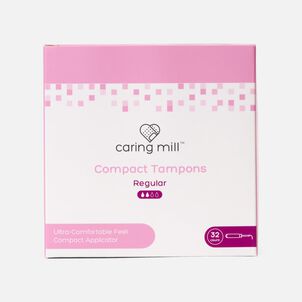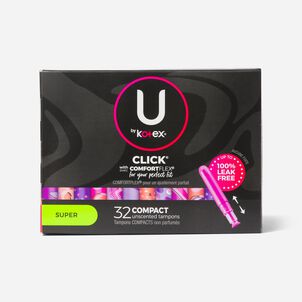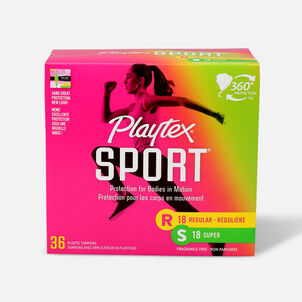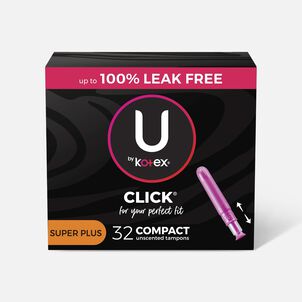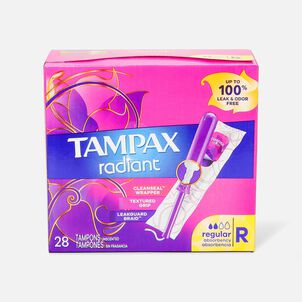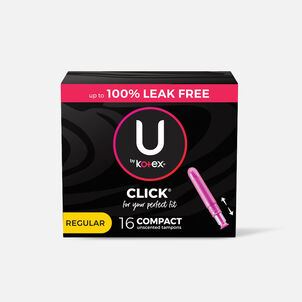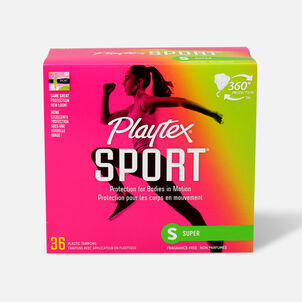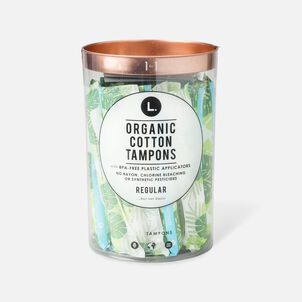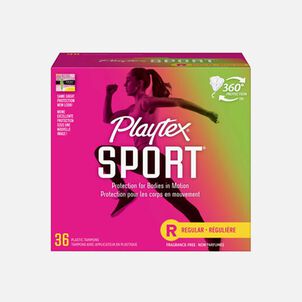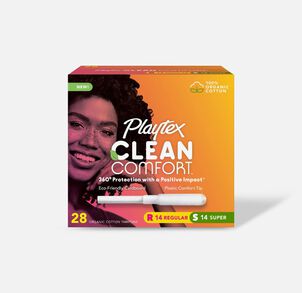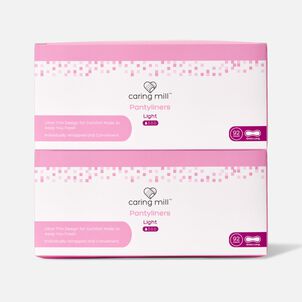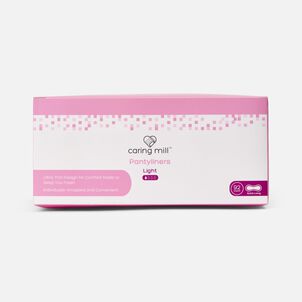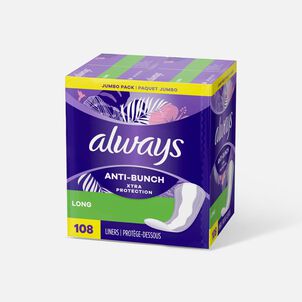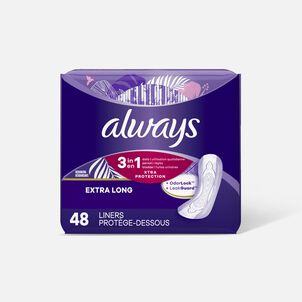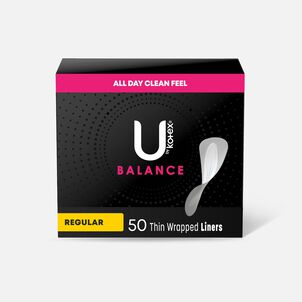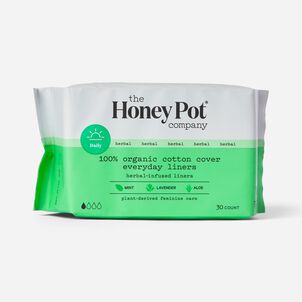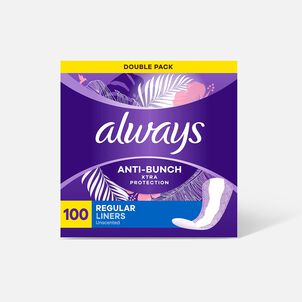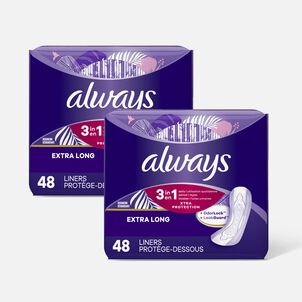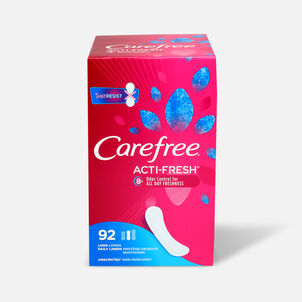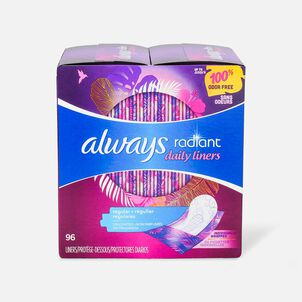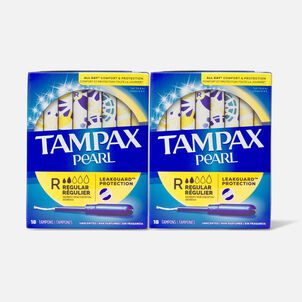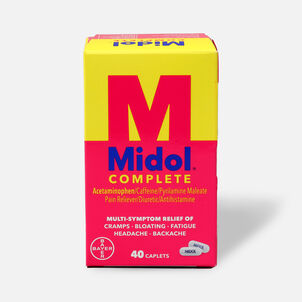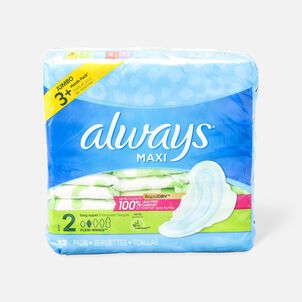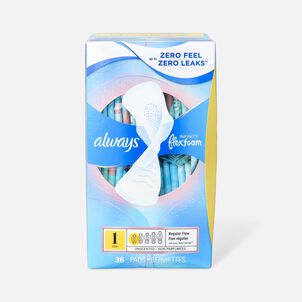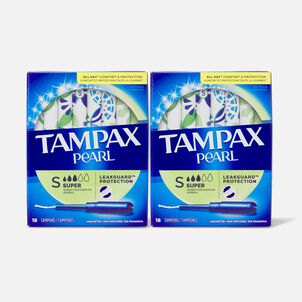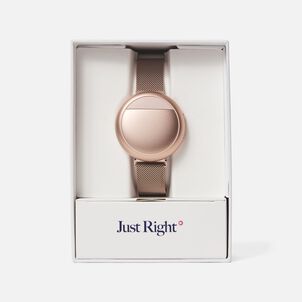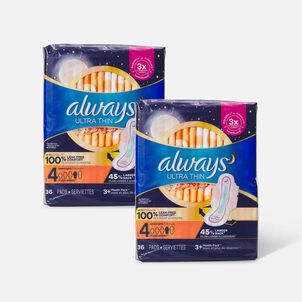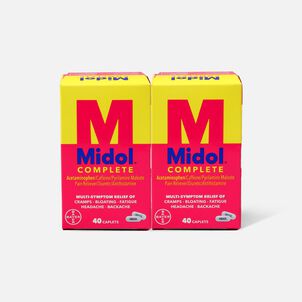When you take a walk down the feminine care aisle, the tampon options can seem overwhelming. Do you stick with the regular size or go bigger? Do you choose a multipack with a variety of sizes? Should you try those organic cotton tampons you saw mentioned on Instagram?
Those are important questions to answer, but most women just stick with the same habits they've had since their teenage years. The problem is that our bodies change drastically as we mature into adulthood, and the best size and type of tampon for our bodies changes along with it.
So here's a simple breakdown to help you shop for feminine products - how to choose the right size and type, as well as which tampon alternatives and accessories to consider.
How to Choose a Tampon Size
Consumers should pick a tampon based on their flow. A woman whose period is lighter should choose a Light or Regular tampon while a woman with a heavier flow should choose a Super or Ultra tampon.
Here's an easy guideline to follow:
| Light | Regular | Super | Super Plus | Ultra |
| Less than average flow | Average flow | Heavy flow | Very heavy flow | Heaviest flow |
Women may also need to consider their schedule when picking the right tampon. For example, a full-time teacher may opt for a Super tampon in case she doesn't get the opportunity to use the bathroom every few hours. A shift worker with regularly scheduled breaks may be able to get by with a Regular or Light tampon.
The strategy employed by many women is to use a mix of tampon sizes to accommodate flow variation. They'll use Super or Ultra-sized tampons the first two or three days, switch to Regular for the fourth and fifth day and then downgrade to Light for the last couple days.
The tampon size you need isn't impacted by your vagina. It also doesn't depend on your weight or height. It may correlate to your age because women who are close to menopause may have lighter or shorter periods.
You may have to experiment to find the right size. Here's how you can tell if you're using the wrong size: If you've removed a tampon after four to eight hours and it's mostly dry, then you can switch to a lighter size. If you have to remove a tampon every couple hours, then you should upgrade to the next largest size.
Tampons should never be kept in for longer than eight hours. Always remove a tampon at the eight-hour mark, even if it's still mostly dry.
Removing tampons more often is better. Even if you can go a full eight hours with a Super tampon, it's better to use a smaller size and remove it every six hours.
Some doctors say that using a tampon that's too big for you is also unsafe. If the tampon is still dry when you remove it, this can lead to vaginal micro-tears.
If you're still soaking through after using several Super Plus or Ultra tampons in one day, or more than seven to eight tampons total, you may need to see a doctor. Excessive menstrual bleeding can be a sign of other problems and should be checked out by your OBGYN.
Many women find themselves combining tampons with panty liners, pads or period panties. For example, you may add a panty liner along with a Super Plus or Ultra tampon during the first day or two of your period in case of leaks.
Different Types of Tampons
Size isn't the only way to differentiate tampons. Here are some other variations:
Applicators
Most tampons come with an applicator, which helps you comfortably insert the tampon. These applicators can be made from either cardboard or plastic. Tampons with plastic applicators are usually more expensive, but are often more comfortable to insert. Women who are eco-conscious may also want to avoid plastic applicators.
There are also some applicator tampons with no applicators, like those from the brand o.b. Tampons without applicators are more common in other countries, but most American women prefer tampons with applicators.
Organic
Tampons may also come in organic and non-organic, which refers to whether the company used organic cotton or conventional cotton.
Some people think that using organic tampons will result in a lighter period or prevent yeast or bacterial infections, but this hasn't been scientifically proven. Whether you choose organic or conventional depends on your personal preference.
Other Factors
There are also scented and unscented tampons. Most vaginal health experts recommend avoiding scented tampons because they may encourage bacteria growth.
Some companies sell compact tampons with shorter applicators that are easier to store in a purse. They should still have the same absorbency as regular-sized tampons.
Menstrual Cup Sizes
Most brands of menstrual cups come in two different sizes, small and large. In general, you should use the smaller size if you have a lighter flow or if you've never given birth before. If you've given birth before or have a heavier flow, the larger size may be more appropriate.
Each brand will have its own recommendation on which size to choose, usually found on the back of the box.
Pad and Panty Liner Sizes
Like tampons, pads also come in a variety of sizes depending on your menstrual flow and panty size. These include light, moderate, heavy, and overnight. They may also come in extra long varieties. Panty liners usually only come in one size.
Both pads and panty liners can be made with organic cotton or conventional cotton. Pads may also come scented or unscented, and with wings or without wings. Wings attach to the underside of the underwear to help the pad stick better and prevent it from moving around during the day. You may also use period underwear!
Panty liners are a very thin type of pad, usually best for women having an extremely light period or who want another layer of protection with a tampon. Some women use panty liners a few days before their period is about to start, in case it comes early.
Thanks for visiting the FSA Learning Center! To stay on top of all FSA news that can affect your health and financial wellness, be sure to follow us on Facebook and Twitter.
Zina Kumok
Zina Kumok is a freelance writer specializing in personal finance. A Certified Financial Health Counselor and Student Loan Counselor, she also works as a money coach helping people one-on-one at Conscious Coins. She has been featured in Lifehacker, DailyWorth and Time. She paid off $28,000 worth of student loans in three years.

